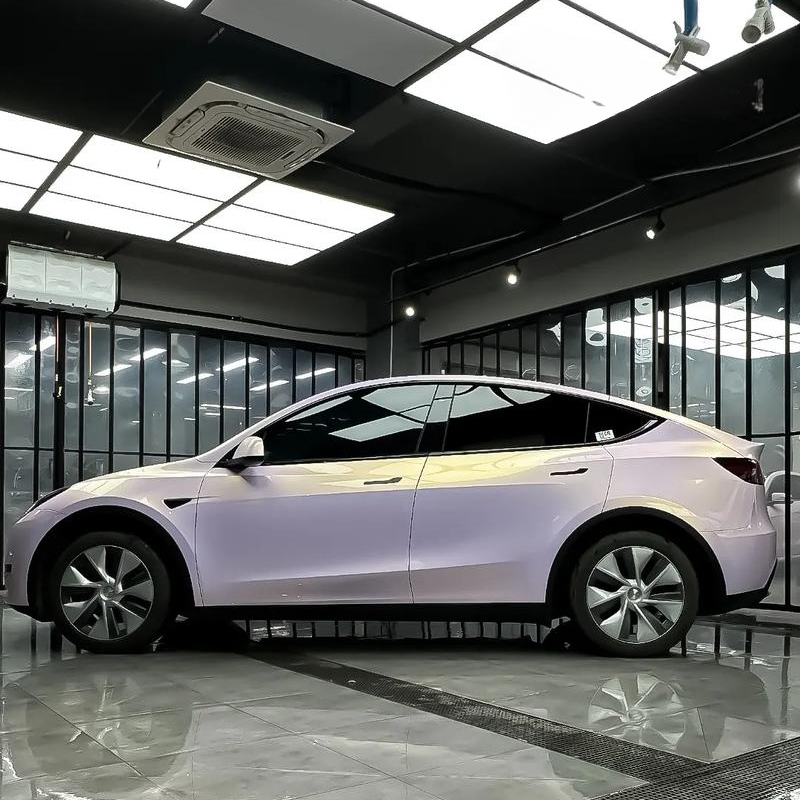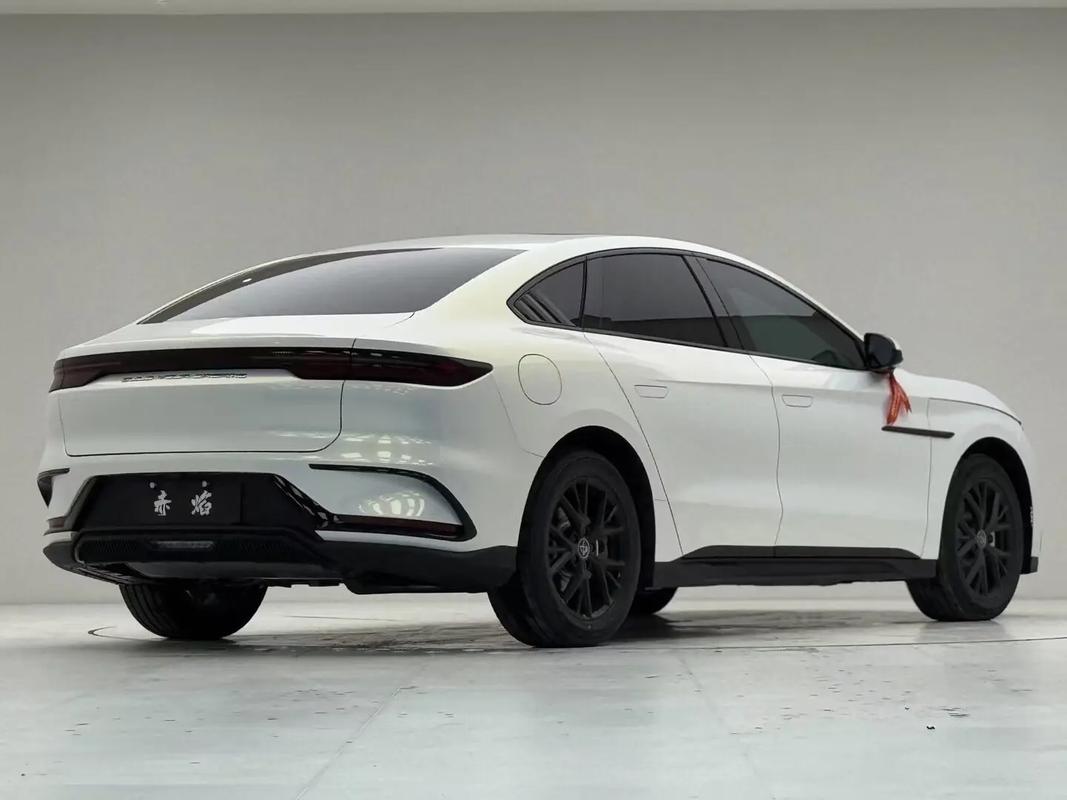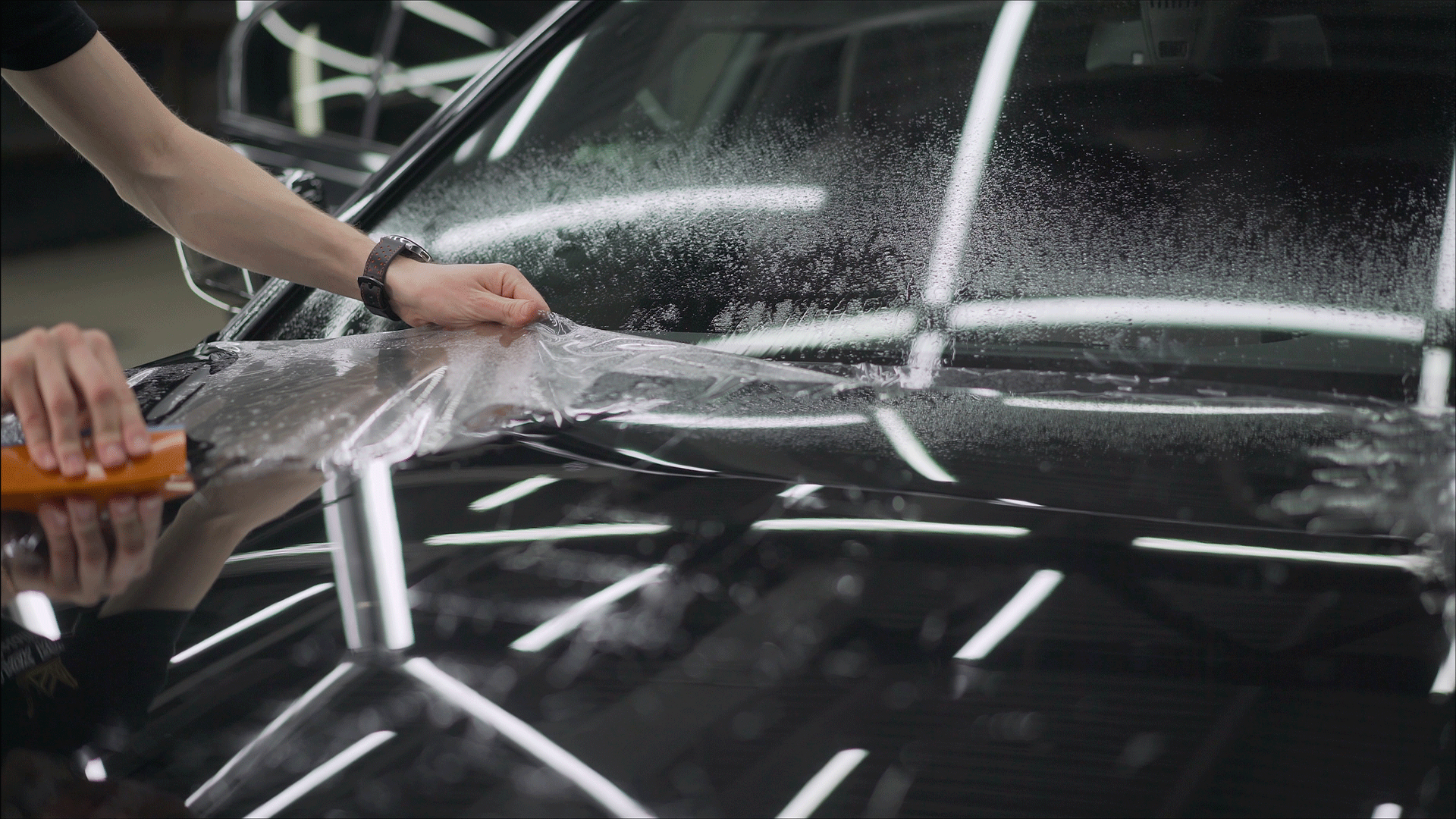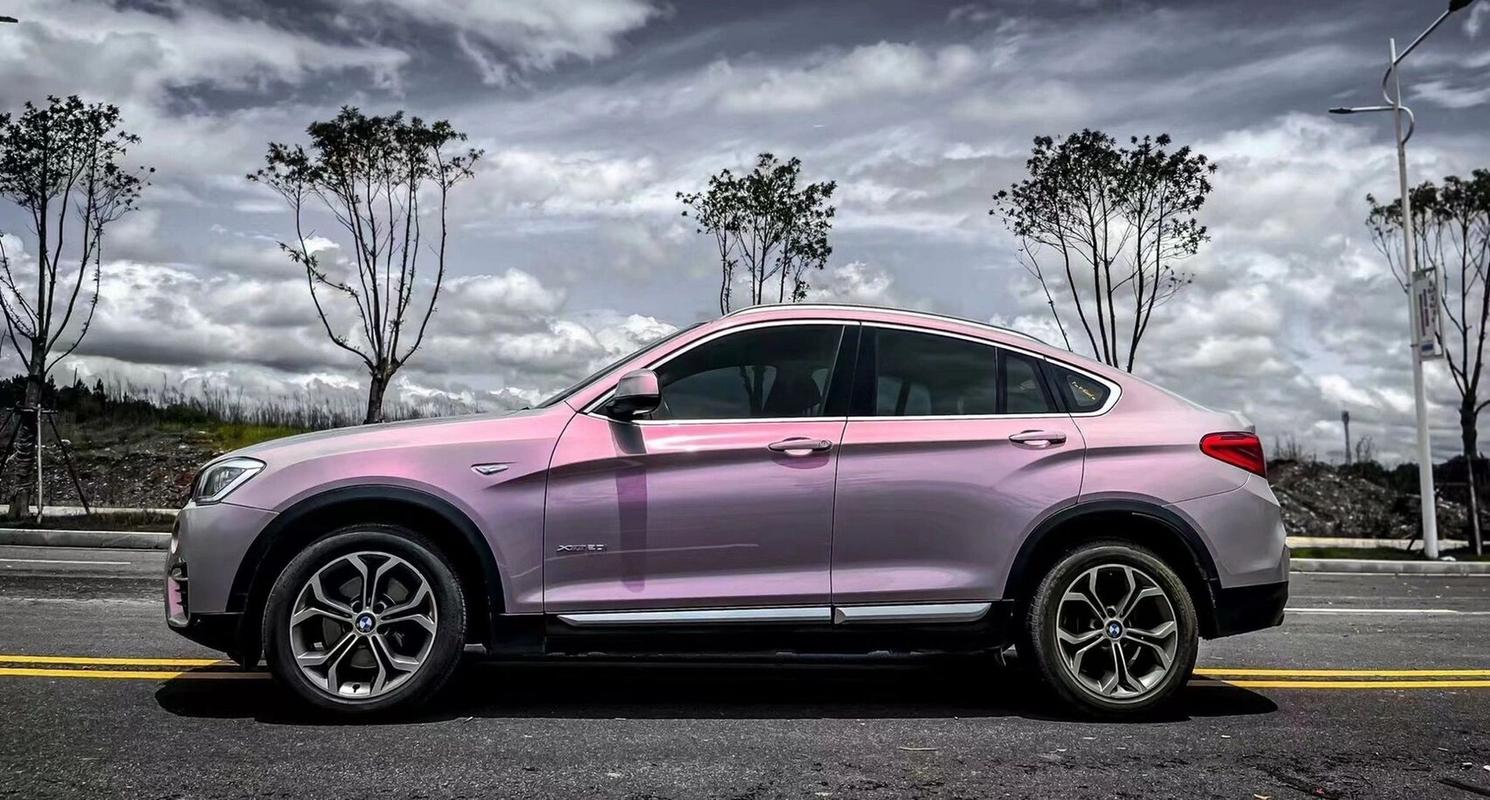Ready to give your car a stunning transformation with vinyl wrap?
You’re making a smart and stylish choice. A beautifully wrapped vehicle — sleek, vibrant, and full of character — never fails to turn heads. Whether you’re going for a bold color shift or a subtle finish upgrade, vinyl wrapping adds a personalized touch that sets your ride apart. It’s not just a makeover — it’s a statement. Get ready for compliments, attention, and maybe even a few copycats in your neighborhood.
Applying a vinyl wrap can be challenging — especially if you’re doing it yourself without much prior experience. It requires careful preparation, the right tools, and a solid understanding of the process to achieve a smooth, professional finish and avoid wasting material. That’s why at Highcool, we’ve created a comprehensive, step-by-step guide to help you wrap your vehicle like a pro using our premium-grade calendared vinyl. Follow along, and you’ll be on your way to a flawless finish without the frustration.
Tools Needed To Vinyl Wrap Your Vehicle

Before you start wrapping your car, having the right materials and tools is key to achieving a professional result. Here’s a breakdown of everything you need — and why each item matters:
1. Premium Quality Vinyl Wrap:Your wrap is only as good as the film you choose. Color, finish, and durability all depend on product quality. Don’t cut corners — poor-quality vinyl can fade, peel, or shrink over time.
Highcool offers a wide selection of top-grade vinyl films in a stunning variety of shades and finishes. Whether you prefer matte, gloss, metallic, or satin, we’ve got the look you’re after — all backed by trusted performance.
2. Measuring Tape:Precision matters. Use a measuring tape to get accurate dimensions of each vehicle panel. This minimizes waste and ensures you order the right amount of vinyl film.
3. Cutting Blade:You’ll need a sharp, precise cutting blade for trimming vinyl to the appropriate size. Highcool supplies professional-grade wrap knives designed for clean, accurate cuts with minimal effort.
4. Surface Cleaner:Clean surfaces are critical for vinyl adhesion. Use a dedicated surface cleaner or make your own by mixing isopropyl alcohol with water (2:1 ratio) in a spray bottle. Remove dirt, wax, and grease before wrapping.
5. Microfiber Cloth:Gentle yet effective, microfiber cloths remove dust and moisture without scratching the surface. Use it to wipe the vehicle clean and dry before applying vinyl.
6. Heat Gun:To make the vinyl pliable and ensure it bonds well, controlled heat is essential. A heat gun allows you to stretch and conform the film around curves and edges, activating the adhesive and ensuring a secure finish.
7. Infrared Thermometer:Applying too much heat can damage the film. An infrared thermometer lets you monitor surface temperature to maintain optimal heat levels during installation. Highcool recommends using this to avoid costly mistakes.
8. Small Magnets:Strong magnets are handy when aligning the film. They temporarily hold vinyl in place so you can check fit and adjust before sticking it down. A simple tool that makes positioning much easier.
9. Squeegee:This is your go-to tool for smoothing out the vinyl. It helps eliminate air bubbles and applies consistent pressure for a seamless application. At Highcool, we offer squeegees in multiple sizes for every kind of contour and detail.
10. Knifeless Tape:Ideal for trimming near sensitive areas like door gaps and rubber trims, knifeless tape allows for clean, surface-safe cutting. It’s a must-have for achieving professional edges without risking damage.
11. Wrapstick Flex Tool:Perfect for tucking vinyl into tight spots and around complex curves, the wrapstick is like a detailer’s pen. Its flexible end helps you navigate difficult areas with precision and control.
12. Clay Bar or Nanoskin Pad:For a truly clean surface, use a clay bar or nanoskin pad to lift embedded contaminants. This step ensures the vinyl bonds directly to the paint, improving durability.
13. Masking Tape:Use masking tape to mark out areas that shouldn’t be wrapped or to create temporary alignment guides. It also protects surrounding surfaces during trimming.
14. Gloves:Protect both your hands and the vinyl surface by wearing gloves. Highcool offers wrap-specific gloves that prevent fingerprints and offer grip while working with the film.
Important Considerations Before You Begin Vinyl Wrapping

Vinyl wrapping isn’t something to rush — it’s a detailed, time-intensive process that demands patience, focus, and preparation. Depending on your experience and the size of the vehicle, completing the wrap can take anywhere from one full day to several days.
This isn’t a solo project either. Having an extra set of hands is essential for managing large vinyl panels, preventing creases or misalignment, and speeding up the workflow. Teamwork not only saves time but also reduces material waste.
Another key factor is your workspace. Wrapping should be done in a clean, enclosed environment — ideally a garage — where dust, wind, and direct sunlight won’t interfere. Even tiny particles of dust can compromise the finish. The room should have a stable temperature — not too hot or too cold — to ensure proper vinyl adhesion and healing. Once applied, the vehicle should remain indoors until the vinyl fully sets, so avoid driving it immediately.
Storage of your vinyl rolls matters too. Keep them upright and away from direct sunlight, heaters, or any high-humidity areas. After use, rewrap the vinyl tightly around the core to avoid deformation and protect the film from moisture or dust buildup.
While optional, it’s helpful to set up a whiteboard or note-taking area in your workspace to track the dimensions of different car parts being wrapped. This keeps everything organized and accessible during the installation process.
At Highcool, we recommend taking the time to plan, prep, and execute your vinyl wrapping carefully — it’s the difference between a DIY job and a professional-grade finish.
Preparing Your Car for Vinyl Wrapping: A Clean Surface Is Key

Before applying your Highcool vinyl wrap, it’s essential to ensure your vehicle’s surface is in perfect condition — because any imperfection underneath will show through and ruin the final finish.
Start by carefully inspecting the entire vehicle for dents, scratches, rust, or peeling paint. These need to be repaired before installation. Use a marker to highlight areas that need attention. For rough or damaged sections, lightly sand them down and use body filler and primer to create a smooth, even surface.
Next, give your vehicle a thorough wash using the two-bucket method — one bucket for the body and another for the wheels. Use a mild detergent and separate cleaning tools for each. Clean from top to bottom, paying extra attention to tight areas like around the wipers, mirrors, and seams. Don’t overlook areas like under the fuel door or along trim lines, where dust and grime often accumulate.
Once rinsed, move on to clay bar treatment. Prepare a simple solution of dish soap and water, spray it section by section, and glide a clay bar over the surface. This step removes any remaining embedded contaminants. If you prefer, professional grease or wax removers also work well. After claying, rinse the car again and dry it completely with a microfiber towel to prevent scratching.
To finish, spray a mixture of isopropyl alcohol and water over the surface and wipe down with a clean microfiber cloth. This final wipe ensures that any remaining oils or residues are removed, leaving the surface perfectly ready for vinyl application.
Pro tip: Consider temporarily removing items like gas caps and drip sill trims — these areas trap dirt and make cleaning and wrapping more difficult if left in place.
🚫 Important: Do not apply any wax or polish before wrapping. The surface must be 100% dry, clean, and oil-free to ensure maximum adhesion of your Highcool vinyl wrap.
The Final Check: The Squeaky Finger Test
Before moving on to the actual vinyl application, there’s one simple but crucial test to confirm your surface is truly ready — the Squeaky Finger Test.
Gently run your clean index finger across the surface of the vehicle. If you hear a faint squeak, congratulations — your car is spotless and ready for installation.
If your finger glides smoothly without resistance or sound, there’s likely still some grease or residue present. In that case, give the area another wipe using a water and isopropyl alcohol mix until it passes the test.
To avoid attracting dust or contaminants again, we recommend applying your Highcool vinyl wrap immediately after this final check — while the surface is still pristine.

Tip: Since your car's surface and the working area are clean now, it is time to wear your gloves.
Measure Twice, Wrap Once: Get Your Dimensions Right
Before cutting any vinyl, it’s crucial to measure each section of your vehicle precisely. This step ensures minimal waste and a clean, professional-looking result.
We recommend setting up a whiteboard or notepad in your workspace to jot down every measurement. You can even sketch a simple outline of the car and label each section to avoid confusion during the wrap.
For best results, measure each panel twice — accuracy here saves you time and material later. With the dimensions in hand, you’re ready to cut the Highcool vinyl accordingly and move on to application.

Cut with Care: Prepare Your Vinyl for Application
Once you’ve confirmed all measurements, it’s time to cut the vinyl wrap from the roll. To ensure flexibility during installation, make sure each piece is 4 to 6 inches longer than the actual dimensions on both ends.
Avoid cutting the vinyl directly on the floor — doing so can lead to scratches, dust contamination, or creases that affect the final finish. Instead, use a clean, smooth, and dry surface such as a large table or dedicated cutting station to preserve the integrity of your Highcool wrap.
Taking these extra precautions now will save you time, frustration, and materials during installation.
Apply the Vinyl: Start Simple, Build Confidence
Now comes the exciting part — applying the Highcool vinyl to your vehicle. This step requires patience, precision, and ideally, an extra set of hands to ensure the vinyl is positioned smoothly and accurately.
If you’re new to vinyl wrapping or not yet confident in your skills, start with smaller, flatter surfaces such as the door panels or trunk lid. These areas are easier to manage and help you get a feel for the material and the process. Once you’ve mastered those, you can gradually move on to more complex curves and contours like bumpers or fenders.
Taking a step-by-step approach helps reduce waste and boosts your confidence as you go.

Positioning the Vinyl with Precision
Gently begin peeling away the backing paper while maintaining even tension across the Highcool vinyl wrap. This helps minimize the chances of wrinkles or air creases forming during application.
With the help of another person, carefully drape the vinyl over the target panel. As you do this, pull both sides of the film outward simultaneously to create consistent tension. This step is crucial for achieving a smooth, bubble-free surface.
Always ensure there’s a bit of extra material extending past the edges of the panel—this gives you room for adjustments and makes edge wrapping much easier in later steps.
Begin Application from the Center Outwards
Start by gently pressing the Highcool vinyl onto the center of the panel, working your way outwards. While applying light pressure, maintain consistent tension across the rest of the film to help it lay flat and avoid unwanted bubbles or creases.
At this stage, the vinyl will lightly adhere to the surface but isn’t fully bonded yet. That’s because Highcool vinyl is designed to activate under specific levels of heat and pressure—making it easy to lift, adjust, and reposition without damage.
No need to stress if your first attempt isn’t perfect—this material gives you the flexibility to refine placement until you’re ready to lock it in.
Removing Creases and Wrinkles from the Vinyl
This is the stage where your squeegee becomes essential. Hold it at a 45° angle, and starting from the center of the panel, press the felt side of the squeegee gently against the vinyl. Work in overlapping strokes outward toward the edges—this helps push out trapped air and smooth out any creases or “fingers” that may have formed in the material.
💡 Pro Tip: Use a dual-edge squeegee—one side felt, one side hard plastic. Only use the felt side when dealing with surface creases to prevent scratching or damaging the film. The hard edge is better reserved for pressing the vinyl into deep grooves or recessed areas. Always be patient and methodical for the cleanest results.
Smoothing Out Imperfections
It’s completely normal to notice small imperfections during the vinyl application process—but don’t worry, they’re easy to fix. Simply lift the film from a nearby edge (avoid disturbing any areas that are already applied smoothly), gently stretch it while keeping it taut, and apply heat to the affected area. The combination of tension and warmth will help the vinyl reset and eliminate bubbles or creases.
Once the flaw disappears, reposition the film carefully using one hand, and use your squeegee with the other to press the vinyl back into place. Take your time—attention to detail here ensures a flawless, professional finish.

Applying Vinyl to Curved Surfaces
Curved sections of a vehicle can be tricky when applying vinyl wrap, as creases are more likely to appear. Don’t worry—it’s all about technique and patience. You may need to adjust and reposition the film several times to get a smooth fit.
To make the vinyl more flexible and easier to work with, gently warm the film using a heat gun—just enough to soften it. Keep the temperature below 120°F (around 80°C) to avoid overstretching or damaging the material. Once softened, lightly stretch the vinyl and carefully mold it over the curve, pressing it into place as you go.
Take your time and remember: gentle heat + steady tension = flawless wrap.

As you progress, the wrinkles will eventually become small and shallow—similar to crow’s feet. At this stage, simply lift the vinyl slightly, apply gentle heat to allow the wrinkles to contract, and then reposition the film smoothly onto the surface. Use a felt-edged squeegee to eliminate any remaining creases and ensure a flawless finish.
Caution: Temperature control is crucial here. Excessive heat can distort the vinyl, reduce its gloss, or even cause irreversible damage. Always follow Highcool’s recommended heat settings to preserve the integrity and finish of the wrap.
Creating Seamless Joins and Concealing Butt Joints
While a seamless vinyl application is often ideal, certain vehicle shapes and wrap designs make seams unavoidable. To ensure clean, professional results, knifeless cutting tape with multi-filament technology is your best friend. Here’s how to approach it:

To create a professional-looking seam when applying vinyl, follow these steps using Highcool’s recommended tools and techniques:
Lay Down the Knifeless Tape: Begin by placing the knifeless cutting tape along the area where the seam will be. Ensure the line is straight and firmly pressed onto the surface.
Apply and Smooth the First Vinyl Piece: Lay your first sheet of vinyl over the tape, smoothing it out carefully to eliminate any wrinkles or bubbles.
Trim the First Layer: Once the vinyl is properly positioned, pull one filament of the knifeless tape to cut through the film. Remove the excess vinyl to reveal a clean edge.
Overlap with the Second Vinyl Piece: Apply the second piece of vinyl, overlapping the first by about 1/4 to 1/2 inch. It’s important to minimize tension in this area to prevent lifting or distortion.
Secure and Flatten: Without using heat, gently stretch and position the second vinyl layer flat across the seam. Lock it in place by squeegeeing it down firmly for a strong bond.
Trim the Overlap: Pull the second filament of the tape at a right angle to the surface to trim the excess overlap cleanly.
Blend the Seam: Lightly squeegee both edges together to unify the surface. Apply a bit of heat and run a gloved finger over the seam to seal the layers and create a nearly invisible joint.
With precision techniques and Highcool’s premium materials, even seams and overlaps can look flawless and factory-finished.
Tucking Around the Edges
We’re almost at the final step—it’s time to finish the edges and corners for a clean, professional result. Begin by trimming any excess vinyl, leaving a 10–20mm margin around the edge. Use a heat gun to gently warm the area, which softens the film and activates the adhesive.
With the vinyl slightly heated, pull it taut to avoid any wrinkling, then carefully tuck it under the panel edge. Use a Highcool Wrapstick Flex or a felt-edge squeegee to press the vinyl securely into place, ensuring strong adhesion along the perimeter.
Proper edge finishing not only enhances the visual appeal but also helps prevent lifting over time—delivering a long-lasting wrap with a flawless finish.

Caution: Secure the Edges Properly
Make sure the vinyl wrap is tightly bonded to the surface with no loose or lifted areas—especially around the edges. If the material isn’t fully secured, the wrap may begin to peel over time, compromising the durability and appearance of your work.
To ensure a strong seal, use a Highcool squeegee to apply firm and even pressure along all edges. This step is critical to maintaining the integrity of the installation and achieving a seamless, long-lasting finish.
Wrapping Around The Corners
Wrapping corners can be tricky since vinyl tends to bunch and form creases in these areas. To tackle this, try the cold pre-stretch technique: gently lift the vinyl about 3 cm from the surface at the corner, stretch it carefully to create tension, and then tuck it underneath. Be sure to smooth out any wrinkles or creases as you go for a clean, professional finish.
At this stage, applying heat is essential to activate the vinyl’s memory effect. The heat causes the film to contract, creating a flawless corner. Use a squeegee to firmly press and secure the vinyl under the corner edge. Once it’s properly adhered, carefully trim away the excess film. Make sure to press down firmly to lock the edges in place, then apply heat once more for a smooth, lasting finish.
Tip: Aim to cut the vinyl as evenly as possible. This step requires patience and a steady hand, so take your time and avoid rushing.
Final Step: Post-Heating the Vinyl
Once the vinyl is perfectly positioned, it’s time for the final heating phase. Applying heat activates the adhesive, increasing its tackiness to ensure the vinyl bonds securely to your car’s surface. Focus especially on areas where the vinyl was stretched, trimmed edges, and corners—these spots need thorough post-heating for a durable, long-lasting finish.

Do not overlook areas where the vinyl overlaps during the heating process. It is recommended to maintain a temperature of at least 212°F (100°C), but be sure to check the specific temperature guidelines for the Highcool vinyl you are using, as these can vary between products. When using a heat gun, keep it 6–12 inches away from the surface and move it in steady, sweeping motions, covering around 6–8 inches of vinyl at a time.
Continue heating until the vinyl reaches the required temperature. While applying heat, use your gloved hands and a squeegee to press the Highcool vinyl firmly onto the surface, ensuring a strong bond. To confirm even heating across all sections, use a thermometer to check the temperature throughout the application.
This is the last step, and after completing it, repositioning the vinyl won’t be possible. If you notice any bubbles, don’t worry—just carefully release the air with an air release tool and smooth the surface using a squeegee. The final heating ensures the adhesive bonds firmly to the vinyl. Once heated evenly, allow Highcool 24 hours to fully set and cure for the best results.
Use the Right Squeegee Pressure
When using the felt side of the squeegee, it’s essential to apply just the right amount of pressure. Too much force can damage the vinyl, while too little won’t effectively remove air bubbles. The best approach is to place your thumb in the center of the squeegee for balanced control and apply firm, even pressure to push air out. Avoid using the edges or corners of the squeegee, as this can leave friction marks or scratches on the vinyl surface.
Trim Excess Vinyl Around Edges Carefully
Leaving too much vinyl around the edges can lead to poor adhesion underneath. When excess material hangs loose, it not only compromises the clean look of the wrap but also risks peeling over time. To ensure a smooth, professional finish, always trim the vinyl with precision—just enough to tuck and seal securely without leaving extra slack.
Avoid Overstretching the Film
Be cautious not to overstretch the vinyl during installation, as this may alter its appearance and finish. Excessive tension can dull the shine of a gloss film or make a matte film appear uneven. In some cases, overstretched areas may even show color variation compared to the rest of the wrap, resulting in an inconsistent look. Always apply steady, even tension to maintain the integrity and visual quality of the vinyl.






Share:
Is Paint Protection Film Worth It? Here’s What You Need to Know
Car Wrap Materials - A Complete Guide